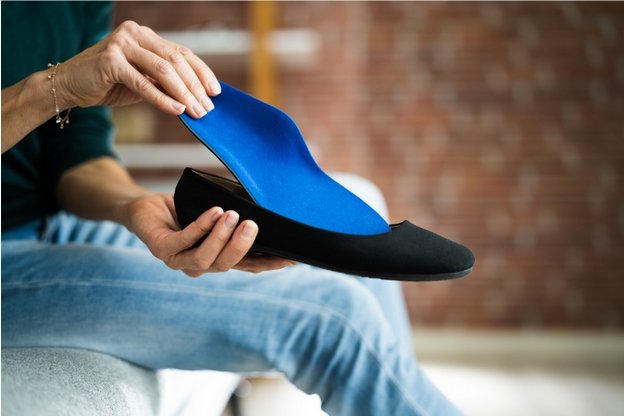Don't Shoes Already Come With Insoles?
You may be familiar with the removable inner part of your favorite pair of shoes, but those aren't insoles. They are actually sock liners, which don't typically provide significant support. Instead, they are intended to keep your feet from sliding around the shoe while you wear them.What Exactly Do Insoles Do?
Different types of insoles serve different purposes. For example, some provide arch support while others reduce pressure on the ball of the foot. There is no one-size-fits-all insole for every person. Instead, insoles can be purchased or customized based on each person's specific needs. Insoles are also helpful for more than just your feet—insoles can help support your entire body, reducing joint pain and even improving your posture.Benefits of Insoles
We're on our feet a lot more than we realize. Whether you're a parent, server, athlete or office worker, your feet probably don't get the love they deserve. That's where insoles come in.The right insoles can:
- Enhance the comfort of your shoes
- Prevent blisters
- Improve posture
- Reduce fatigue
- Improve heel cushioning
- Reduce back, knee and hip pain
- Provide arch support
Everyone Can Benefit from Insoles
No matter your lifestyle or occupation, you can benefit from insoles. Insoles are great for orthopaedic patients who suffer from back pain, but they are also great for active individuals who are on their feet all day, including:- Athletes
- Service industry workers
- Retail workers
- Factory workers
- Construction workers
How to Choose the Right Insoles
Some companies specialize in customized insoles that are made specifically for your feet, taking into account your weight, gait, posture and lifestyle. However, there are also plenty of over-the-counter insoles that can still provide the support and relief that you’re looking for.Insoles for When the Balls of Your Feet Hurt
If the balls of your feet are the first things to start hurting after prolonged standing or walking, you may benefit from insoles that reduce pressure on your metatarsal bones. These types of insoles are typically small pads that fit directly under the balls of the feet to make wearing shoes, especially dress shoes or high heels, much more comfortable. H3: Insoles for Flat FeetIf you have flat feet, then you may benefit from insoles that provide arch support. These insoles provide a comforting heel cradle and curvature for helping to support the arch of the foot.


